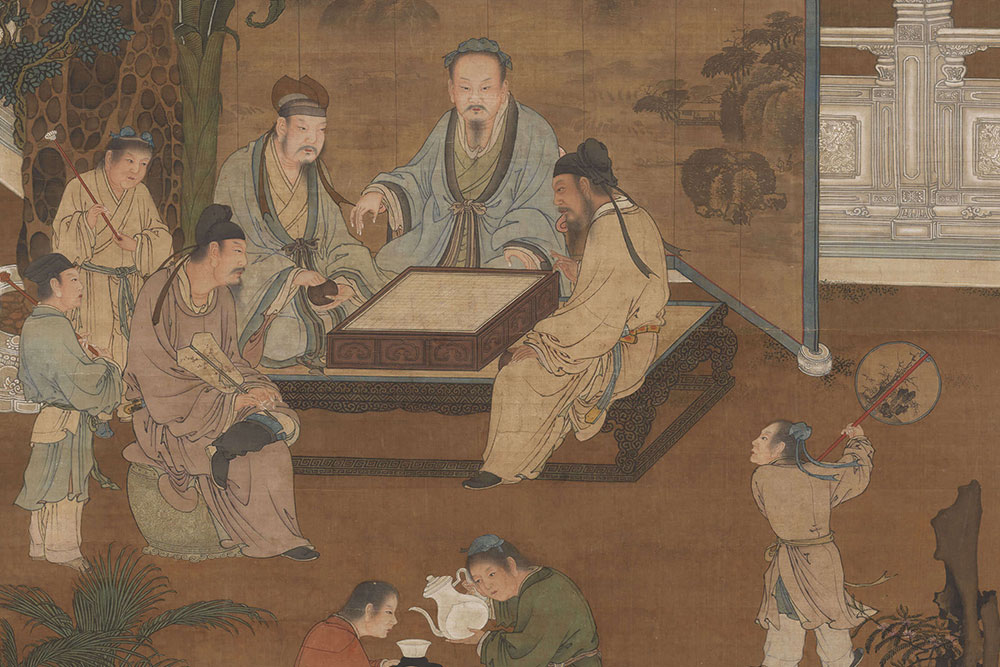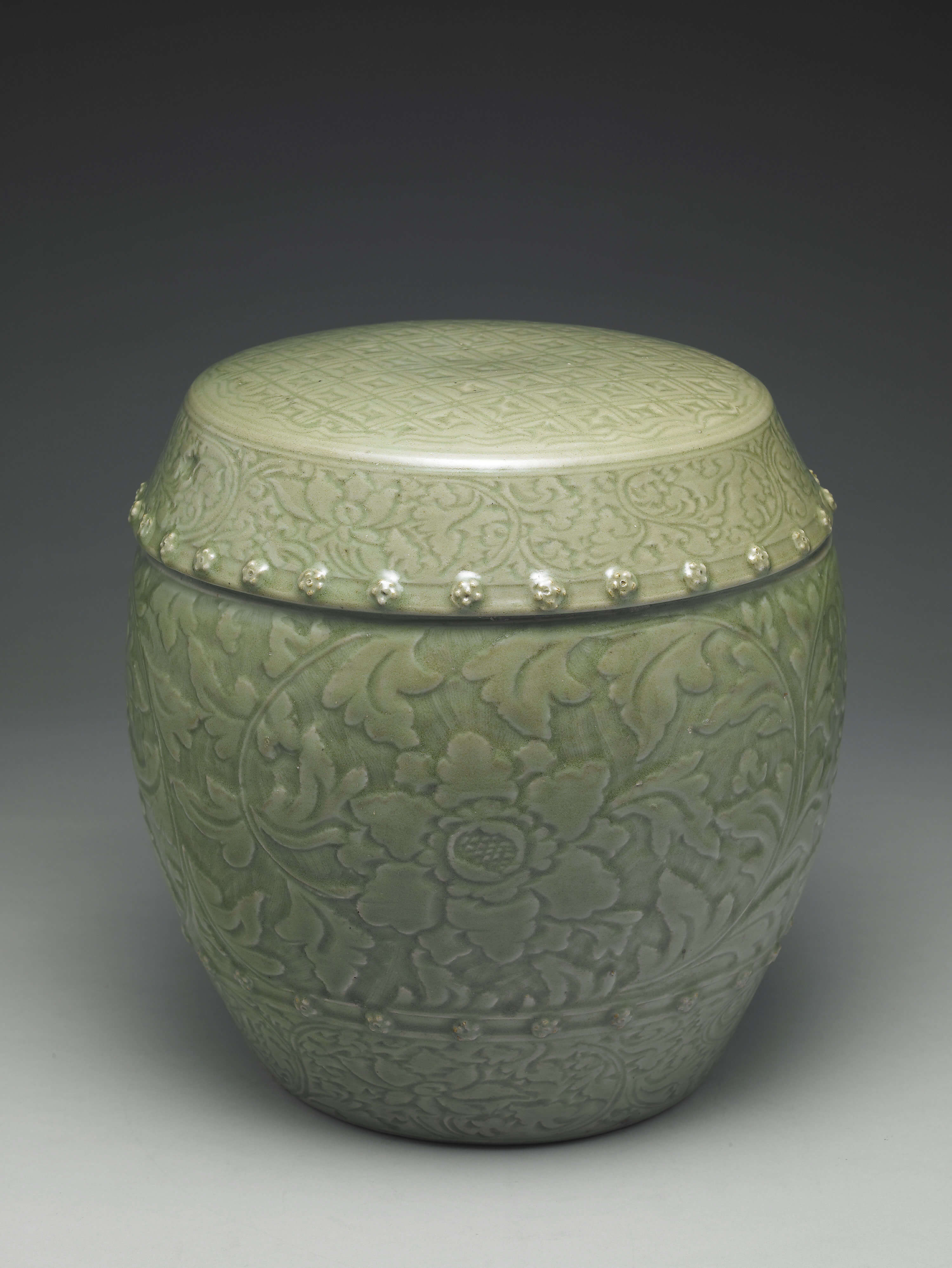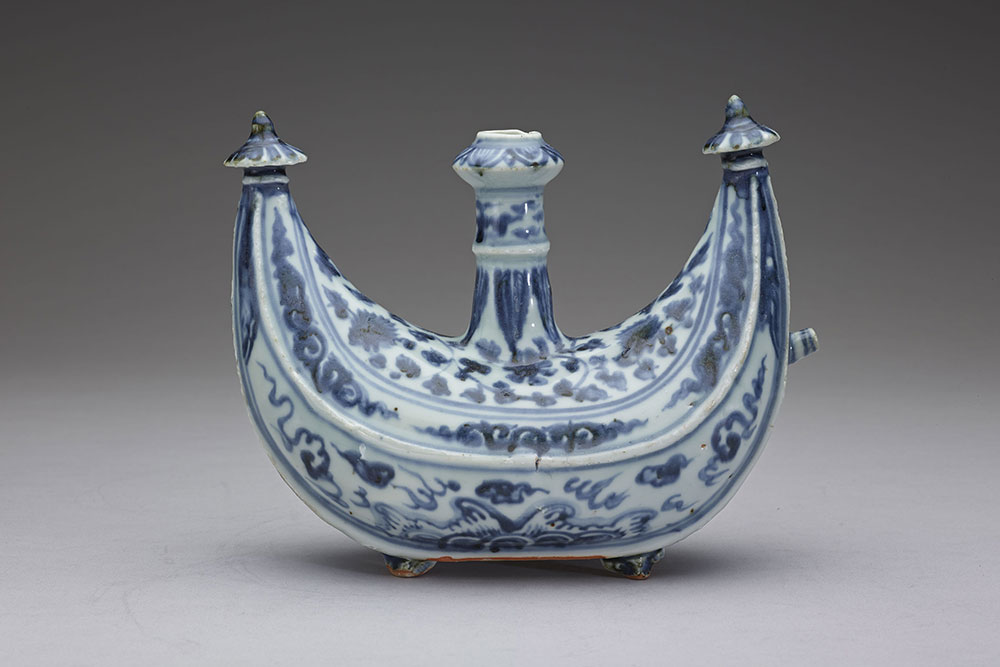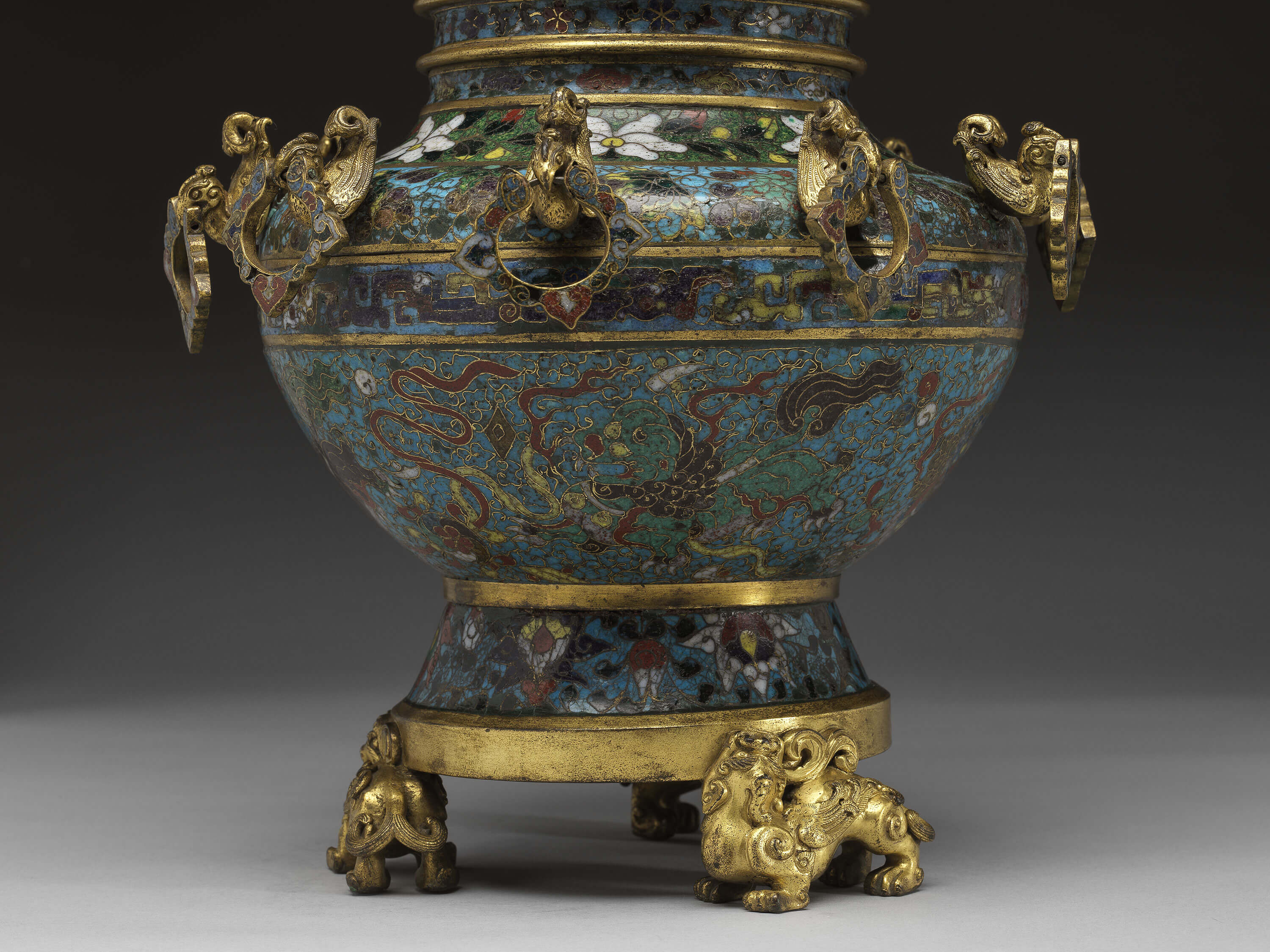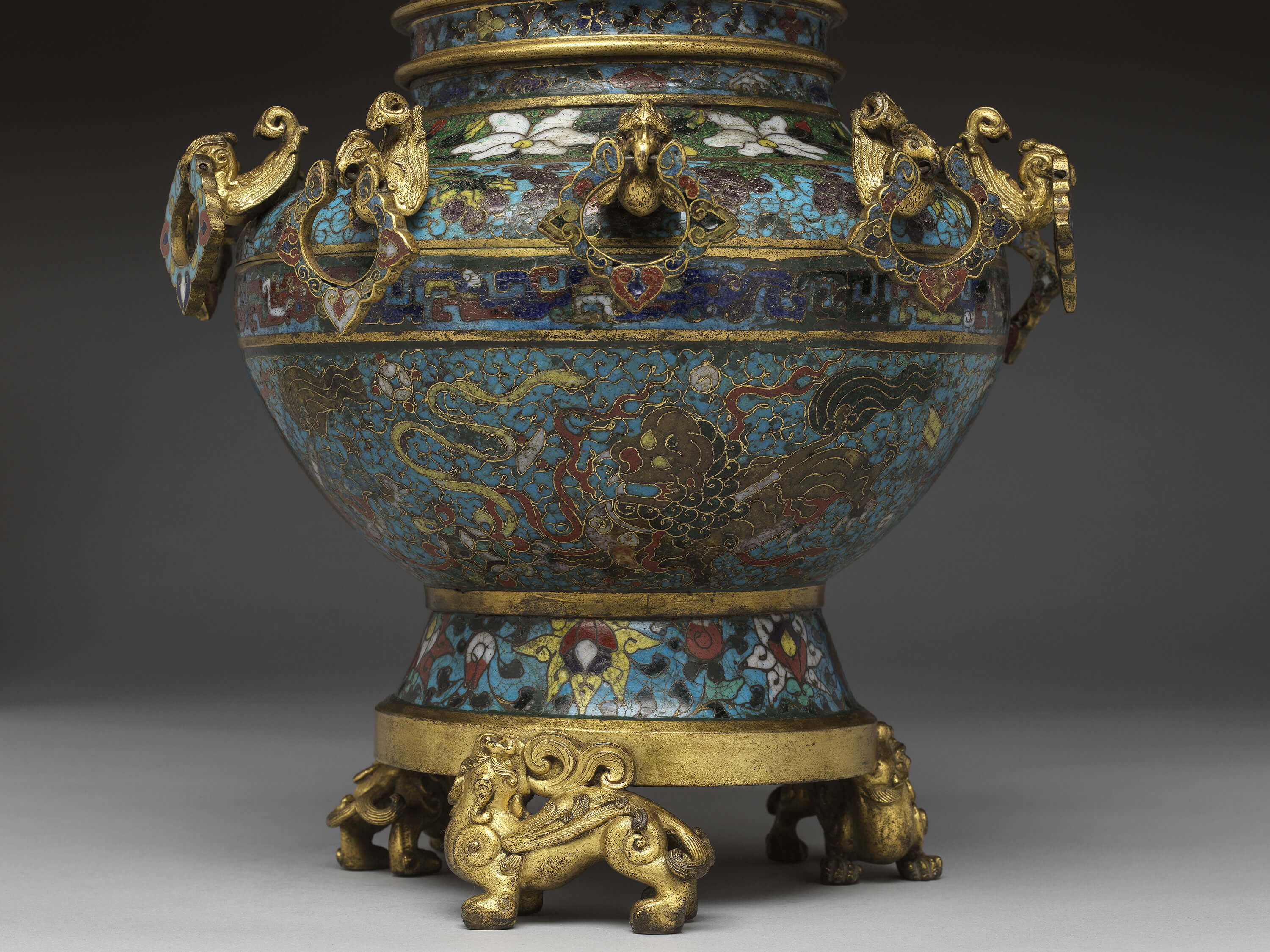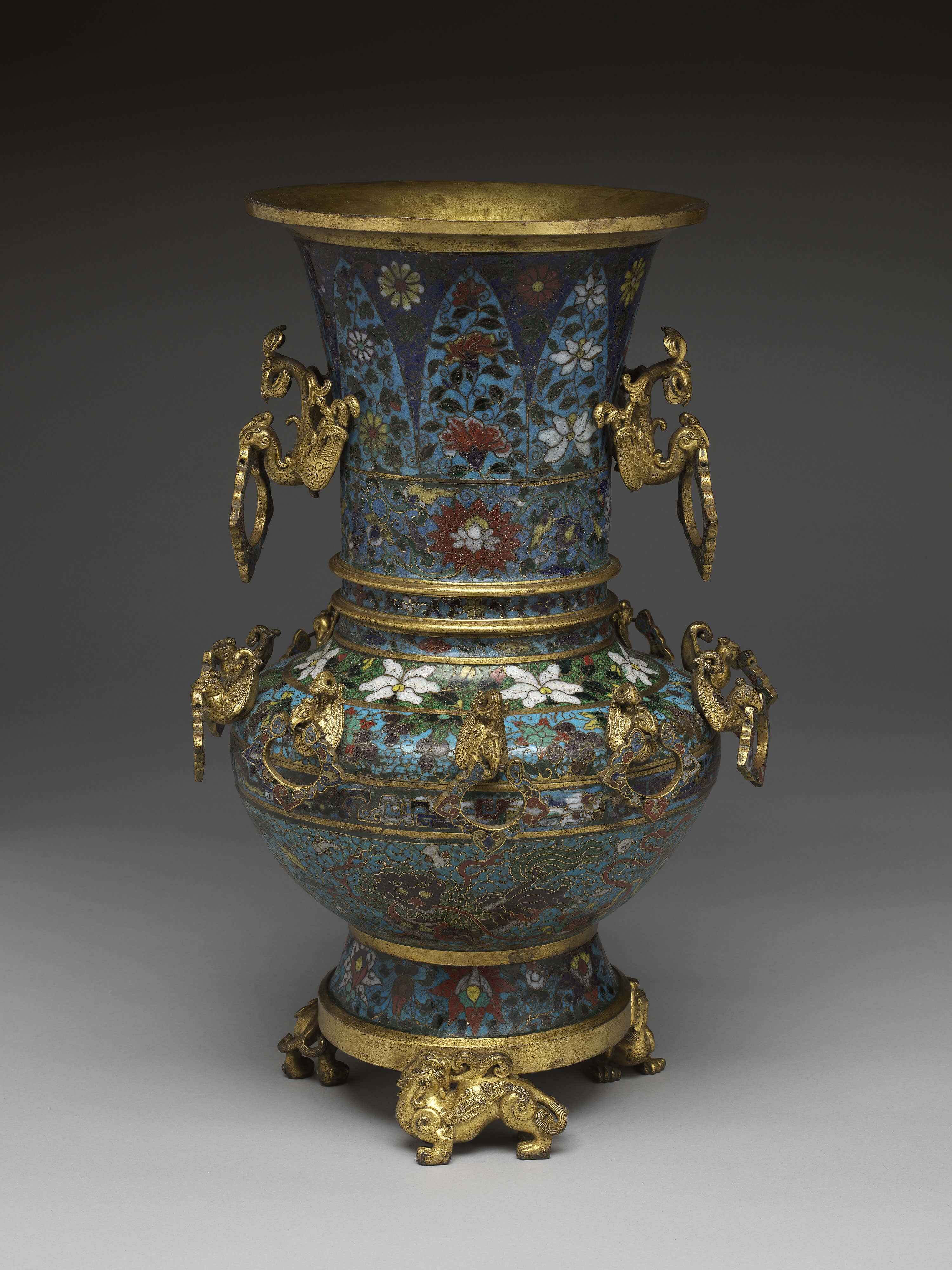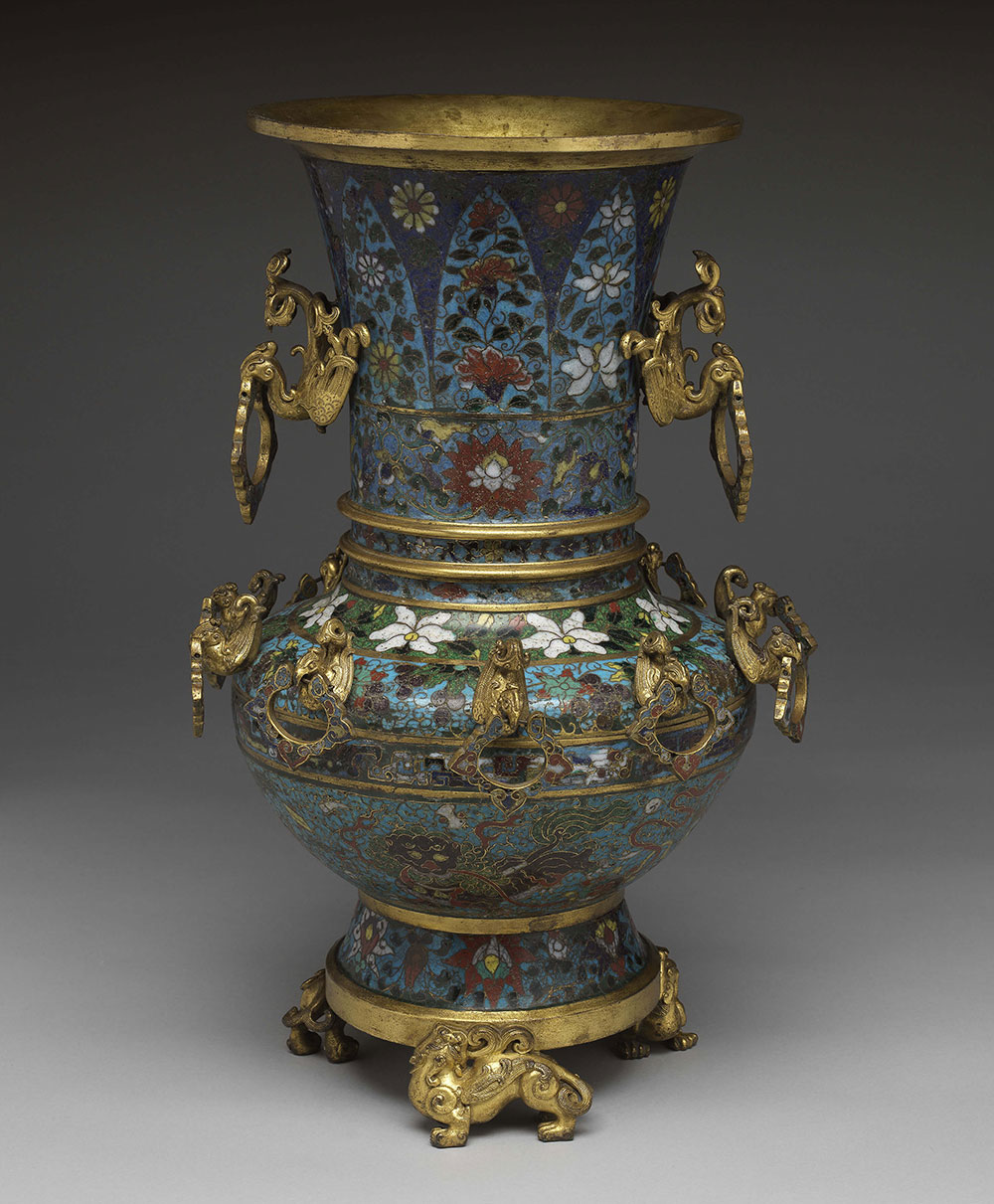Everlasting Resonance
The interaction of the 15th century arouses the Chinese sponsors and craftsmen's interest in Islamic style. Even in the 16th and 17th centuries, the trend was not decreased and the oversea trades were continued. The decoration on artworks still reflected the style of the Ming intertwined with the Islamic world.
- The Eighteen Scholars (Go)
- Attributed to Song dynasty
Scholars are playing go in front of a screen in a garden with green plantain, red pomegranates and unusual shaped rocks. The tea and wine vessels on the jade table are similar to the artifacts from the tomb of Prince Chuang of Liang (1411-1441). The porcelain seat is similar in shape to those in the National Palace Museum collection. They present the luxurious life in the 15th century.
- Junchi water vessel with a crescent shape body in underglaze blue
- Ming dynasty, 16th century
The body in a crescent-moon shape is what makes this water vessel special. The crescent moon represents the power of rebirth in Islamic doctrine. This form is particularly created for the Islamic world in the 16th century.
- Hu-tsun with phoenix pattern in cloisonné enamels
- Ming dynasty, 17th century
Cloisonné is said to be introduced to China through the Arab world from Byzantium in the Yuan dynasty (1279-1368).
This vessel was created by combining and remodifying cloisonné vessels of the different periods by the craftsmen of the 17th century.

